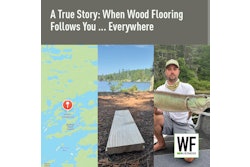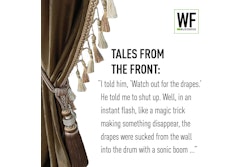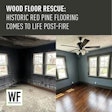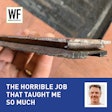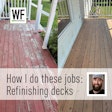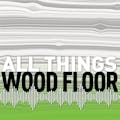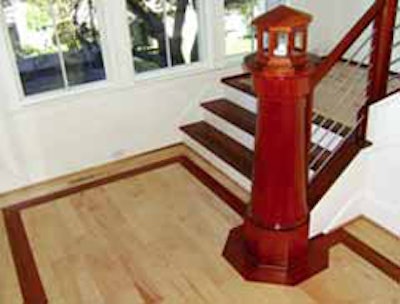
 Sometimes design elements in the home lead to simple wood floor upgrades that are an easy sell.
Sometimes design elements in the home lead to simple wood floor upgrades that are an easy sell.After the job was finished I was asked to work on the next job site, but I didn't want to go back on the road. I ended up in the wood flooring business by chance when I met up with a guy who taught me how to install. He didn't have the money to buy tools, so I bought the tools and he got the jobs, and we split the work installing wood floors.
That business relationship ended badly. He stole my truck and all my tools, and it turned out he'd been doing work on the side without telling me. All I had in the world was my family and 70 bucks in my pocket. That crisis was a turning point in my life. My grandma begged me to go to church—I'd been in all sorts of trouble—so I went, and from that point on, I turned my life around. That Monday, I talked with somebody who had hired my ex-partner for a job. All my tools were at his job site, and my ex-partner hadn't been showing up to do the work, so I got the job. I ended up getting my truck back, too, and I went into business by myself.
Through my church I met Chris Bates, who owns Charleston-based The Charleston Bay Co., a wood flooring manufacturer. He'd been a member of the NWFA for years. He told me that I was losing half of my business if I didn't know how to sand and finish; I'd been installing the floors and finding somebody else to sand and finish. His company has a program where they donate 10 percent of every 10 t h sale to a worthy cause. He deemed me a worthy cause and paid for me to attend an NWFA school in Baltimore in August 2002. That's where I learned how to install properly and how to sand and finish, which I'd never done before.
My roommate at the time offered me a very low-interest loan to buy a big machine, so I bought one and eventually bought an edger. Ever since then I've made it a priority in my business to spend money on good equipment and keep it in good shape, and that's always paid me back.
At the school I learned different methods of doing everything and better ways to plan. Once I figured out that the schools were beneficial, teaching me how to do things faster, I wanted to go again. There were so many things I learned, from sanding and finishing to using slivers and other tricks of the trade. I've always been one to want to educate myself to make sure I'm doing something right. The investment that people were putting into me was considerable, and I did not want to lose a job or get sued because of something I did wrong.
Less than two years later, I went to the Advanced School, and it was so much information at one time. It opened my eyes to a market I wanted to be in—one I would enjoy more than straight-laying floors, something that was a challenge and would be there forever. I could see somebody wanting to tear out a red oak floor because they didn't like red oak and wanted to replace it with something better, but I knew if I installed a detailed floor, it would be hard for somebody to scrap that kind of flooring.
It was so much fun that I went back to the Advanced School as an assistant instructor. I wanted to go again because I felt like I had missed so much, but that I could also help. They try to pack a lot into the schools, and if you're not paying attention for one second, you'll miss something. I've taught two more Advanced Schools since then, and now I have the fever to teach these classes and help people see the easier ways to do things.
Back at home, I think some of my builders just thought I was on vacation a lot (aahhh, beautiful Chesterfield, Mo.), but I also got respect for teaching at the schools. It's taken me years to develop my reputation, and I am the person who wears the patches from the schools and my NWFA degree on my sleeves. When you do that, you'll always have people try to talk down about you, but I'm not worried about those people, I'm worried about the image I present to my customer. My patches, Craftsman Degree and NWFA Certification can earn a lot of respect, especially when you're as new in the business as I am.
Today, custom work is what I've become known for. In this area—the Low Country of South Carolina—there are lots of multimillion dollar houses in places like Kiawah, Seabrook and Wild Dunes, but people don't realize that upgraded wood flooring is another option for them instead of the sevenpiece crown package. After the Advanced School, I worked hard to convince my builders that if they're building a multimillion dollar house, straight-lay flooring is not going to help them sell that house in a market full of other multimillion-dollar houses; they need to have something that's going to help move that house. It can be an easy sell if you look at things in the home and try to tie things together design-wise with the floor. For example, one house I did had a maple floor and a Brazilian cherry staircase with a newel post lathed to look like a lighthouse with an octagonal base. I suggested doing a Brazilian cherry border to tie in the staircase and run the border in an octagonal shape around the newel post (shown on page 25). It was an easy sell. When you're starting, though, you definitely have to work with the builders price-wise to get your foot in the door.
I've got guys around me who have huge businesses, and they think the way to earn money is moving a lot of wood and doing a lot of square footage. There's nothing wrong with that, but that's the exact opposite of where I want to be. I set up a shop in someone's house to create something I hope will be there forever. Without my faith, the generosity of Chris Bates of The Charleston Bay Co., and the many relationships I've made at the schools, Maddray Flooring LLC would not embrace the vision we hold dear today.












